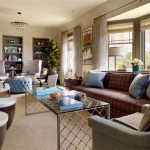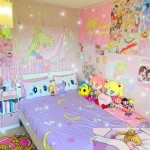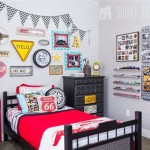How To Decorate a Low TV Stand: Aesthetics and Functionality
A low TV stand, distinguished by its streamlined silhouette and proximity to the floor, presents a unique decorating challenge. Unlike its taller counterparts, a low stand commands a wider visual presence horizontally, making careful consideration of arrangement and adornment crucial to achieve a balanced and aesthetically pleasing focal point within a room. The objective should be to integrate the TV stand seamlessly into the existing décor while enhancing its functionality and preventing a cluttered or disproportionate appearance.
The success of decorating a low TV stand hinges on understanding its inherent characteristics. Its primary function is to support a television and associated media devices, demanding practical solutions for cable management and device placement. Furthermore, its low profile can either emphasize the horizontal space or cause it to feel visually compressed. Therefore, the decorative elements chosen should either complement its horizontal design or subtly introduce height to counteract its low stance.
Effective decoration strategies involve a thoughtful approach to object selection, color palette, and overall arrangement. It is important to consider the style of the room, the size of the TV, and personal preferences to create a cohesive and harmonious design. The following sections will explore key principles and practical tips for successfully decorating a low TV stand.
Key Point 1: Prioritizing Functionality and Organization
Before adding any decorative elements, address the fundamental issue of functionality. A low TV stand, by its very nature, is often associated with media storage. Consequently, careful planning is necessary to avoid visual clutter and maintain a clean, organized aesthetic. Begin by identifying the essential components that need to be accommodated, such as gaming consoles, Blu-ray players, cable boxes, and remote controls.
Cable management is paramount. Exposed wires can instantly detract from an otherwise well-decorated space. Implement strategies to conceal cables, such as using cable sleeves, cable ties, or mounting the TV to the wall to minimize visible cords. Consider incorporating a power strip with surge protection within the TV stand, ensuring easy access and protection for electronic devices. Look for TV stands with built-in cable management systems, as these offer a streamlined and integrated solution.
Storage solutions should be both practical and visually appealing. If the TV stand has open shelves, utilize decorative boxes, baskets, or fabric bins to store items such as DVDs, games, or spare remotes. These containers can help organize clutter and add a touch of texture and color to the space. For closed-door cabinets or drawers, organizers can be used to maximize storage space and prevent items from becoming disorganized. Clear plastic containers are particularly useful for storing small items and making them easily accessible.
When arranging media devices, consider ventilation. Electronics generate heat, and inadequate ventilation can lead to overheating and damage. Ensure that there is sufficient space around each device to allow for proper airflow. Avoid overcrowding the shelves or cabinets, and consider using a TV stand with open shelving to promote better ventilation. If closed cabinets are necessary, look for models with ventilation holes or consider drilling your own to ensure adequate airflow.
The placement of the TV itself is crucial. The TV should be centered on the stand and at a comfortable viewing height. If the TV is too low, it can strain the neck. Consider using a TV stand with adjustable height or mounting the TV to the wall above the stand to achieve the optimal viewing angle. Before mounting, ensure the wall can support the weight of the television and all appropriate safety precautions are taken.
Key Point 2: Balancing Aesthetics with Decorative Elements
Once the functional aspects of the TV stand are addressed, the focus can shift to decorative elements. The goal is to create a balanced and visually appealing arrangement that complements the style of the room while avoiding clutter and maintaining a sense of order. The selection of decorative items should be carefully considered, taking into account their size, color, texture, and overall aesthetic impact. Consider incorporating elements that reflect personal interests and create a welcoming atmosphere.
Varying heights are important for visual interest. Since the TV stand is low, it is important to introduce objects of varying heights to create a more dynamic and engaging display. This can be achieved by using items such as tall vases, table lamps, or stacked books. However, avoid overwhelming the space with too many tall objects, as this can create a sense of imbalance.
Plants can add a touch of life and freshness to the TV stand. Consider incorporating small potted plants, succulents, or even a small vase of flowers. Plants not only add visual appeal but also help purify the air. Select plants that are appropriate for the lighting conditions in the room and that are easy to care for. Avoid using plants that are too large or bushy, as they can obscure the TV or create a cluttered appearance. Faux plants are also an option for individuals who want to avoid the maintenance of real plants.
Books can be both decorative and functional. Stacking books horizontally or vertically can add visual interest and create a sense of depth. Choose books with attractive covers or spines that complement the color scheme of the room. You can also use books as a base for displaying other decorative objects, such as small sculptures or candles. Consider arranging books by color, size, or genre to create a more organized and visually appealing display.
Artwork can add a personal touch and enhance the overall aesthetic of the TV stand. Leaning a framed print or photograph against the wall can create a casual and inviting atmosphere. Choose artwork that complements the style of the room and that reflects personal interests. Avoid using artwork that is too large or overwhelming for the space. Consider using a gallery wall or a series of smaller prints to create a more cohesive and balanced display.
Decorative objects, such as sculptures, vases, or candles, can add personality and visual interest to the TV stand. Choose objects that complement the style of the room and that reflect personal interests. Avoid using too many small objects, as this can create a cluttered appearance. Consider using a few larger, more impactful objects to create a focal point. Candles can add warmth and ambiance to the space, but be sure to place them away from flammable materials.
The color palette of the decorative elements should complement the color scheme of the room. Use a limited number of colors to create a cohesive and harmonious look. Consider using a neutral base color and adding pops of color with decorative objects or artwork. Avoid using colors that clash with the TV stand or the surrounding furniture.
Key Point 3: Considering Scale and Proportion
Scale and proportion are crucial considerations when decorating a low TV stand. The size and arrangement of decorative elements should be carefully considered to ensure that they are in proportion to the TV stand and the surrounding space. Overcrowding the space with too many large objects can make the stand feel cluttered and unbalanced, while using too few small objects can make it feel sparse and uninspired.
The size of the TV should be proportionate to the size of the TV stand. A TV that is too large for the stand can overwhelm the space and create a sense of imbalance. Conversely, a TV that is too small can make the stand feel empty and uninspired. Measure the TV stand and the TV before making any purchases to ensure that they are properly proportioned.
The size of the decorative elements should be proportionate to the size of the TV stand and the TV. Use larger objects sparingly and balance them with smaller objects. Avoid using objects that are taller than the TV, as this can distract from the focal point. Consider using a mix of objects of varying sizes to create a dynamic and visually appealing display.
The arrangement of the decorative elements should be balanced and symmetrical. A symmetrical arrangement can create a sense of order and harmony, while an asymmetrical arrangement can create a more casual and dynamic look. Experiment with different arrangements until you find one that is visually appealing and balanced.
Negative space, or empty space, is just as important as the decorative elements themselves. Leaving some areas of the TV stand empty can help create a sense of balance and prevent the space from feeling cluttered. Use negative space strategically to highlight certain objects or create a sense of visual breathing room.
Consider the viewing angle from different parts of the room. Walk around the room and observe the TV stand from different perspectives. Make sure that the decorative elements are visible and appealing from all angles. Adjust the arrangement as needed to ensure that the TV stand looks its best from every vantage point.
The lighting in the room can also affect how the decorative elements appear. Consider using lamps or other light sources to highlight certain objects or create a softer, more ambient light. Avoid using harsh or direct lighting, as this can create glare and make the space feel less inviting.
Ultimately, the goal is to create a visually appealing and functional space that reflects personal style and enhances the overall aesthetic of the room. By carefully considering the principles of functionality, aesthetics, scale, and proportion, it is possible to transform a low TV stand into a stylish and organized focal point.

40 Ideas For Decorating Around The Tv A House Full Of Sunshine

Low Gray Metal Tv Unit Design Ideas

51 Modern Tv Unit Designs For Hassle Free Ping

26 Stunning Tv Stand Decor Ideas Enthralling Gumption

Classy Low Profile Tv Stand Ideas Home Decor

40 Ideas For Decorating Around The Tv A House Full Of Sunshine

Low Blue Tv Console Design Ideas

11 Tv Stand Designs That Will Elevate Your Living Room

Tv Wall Design Ideas From To Expensive Media Cabinet

Classy Low Profile Tv Stand Ideas Home Decor
Related Posts







